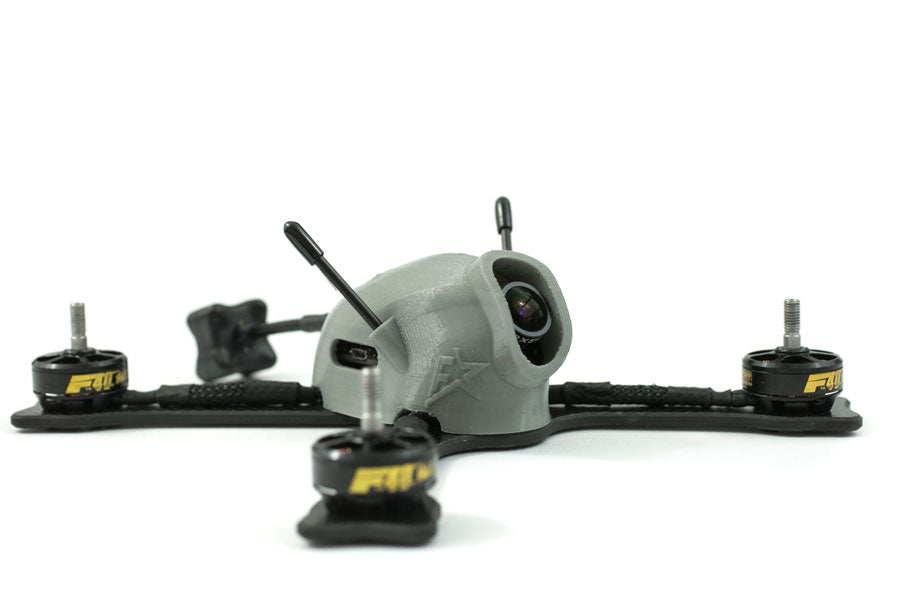
FlightClub Tokio X
FlightClub Tokio X
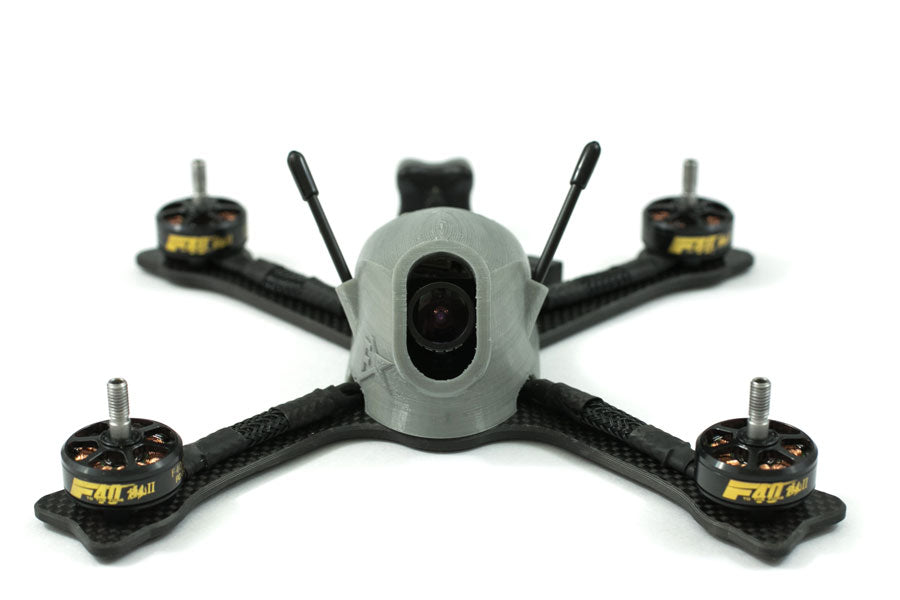
After months and months of designing, prototyping and currently testing, I’m proud to present to you our first frame, the FlightClub Tokio X. (Formerly known as the “FX210”)
Check out the Tokio X page.
Thanks to all the people who contributed in naming of the frame in the last post, Design the Best Quadcopter of All Time. (Nobody won but don’t worry, I’m going to do a frame give away.) I decided to call it Tokio X. Why Tokio? My other passion besides FPV is travel. So I think I’ll start naming my frames after some of my favorite places in the world. Plus it’s a catchier name that the boring FX210.
Details of the Video
The quad flying at the end of the video was a prototype flown by FlightClub team pilot Ivan “EnvyAstro” Rodriguez. Here’s his race setup:
- Tokio X (prototype) with GoPro canopy
- KISS FC
- Cicada 35A 4in1 ESC
- EMAX RS2306 2750KV motors
- HS1177 Camera
- FrSky XSR receiver
- TBS Unify Pro Race 200mw VTX
- TBS Triumph antenna
- FlightClub 4s 1500mAh Punch Pack Battery
- RaceKraft 5040 tri blade props
- GoPro Session
Reinventing Quadcopter Frames
Be prepared to change your perception about quadcopter frames. Once you fly the Tokio X, your view of quadcopter frames will change. The most noticeable change is the protection. My testers and I have been bashing the crap out of the prototype frames and we have yet to break anything (as of this post) besides the two camera lenses I broke flying into steel poles. I’m by far the worst pilot of all my testers. Between my testers and I we’ve put at least 300 battery packs combined through our prototypes as of this post. We’ve done things to the that would have demolished full carbon frames and it’s electronics. Tokio X just bounces off and keeps soldiering on.
Edit: As I’m writing this post, one of my testers has broken an arm. He was using a quasi-isotropic type carbon fiber. More on the carbon fiber down below. I won’t be using this type of carbon fiber in the final frames and the arms will be beefed up.
Innovation
Butter Mount
One feature I didn’t mention in the last post about this frame was the Butter Mount. It’s an innovative way to mount the flight controller stack. Up until now, all known quadcopter frames just use 4 – 3mm holes spaced 30.5 x 30.5mm apart in a square. The problem with that is when you mount your hard screws through that hole is all the vibration from the motors are transferred directly to your flight controller. These vibrations cause issues in the form of oscillations, poor/eratic flight performance, extra heat in your ESC/motors, wasted energy and more.
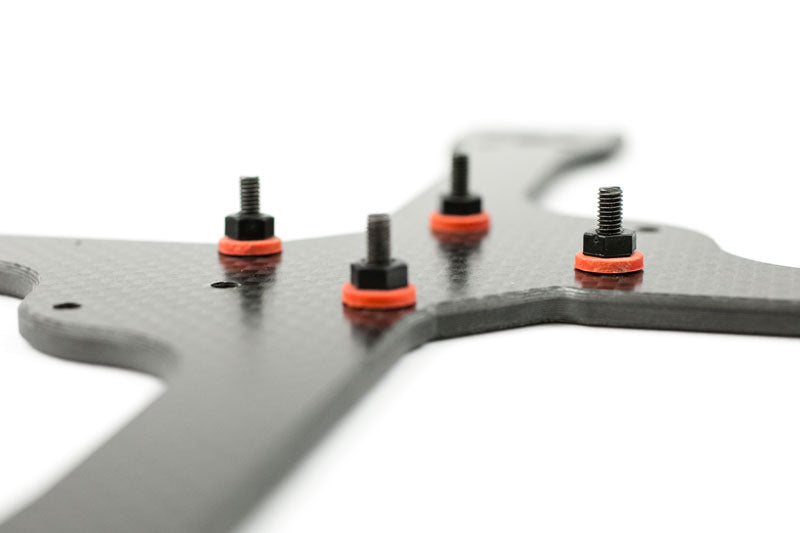
O-rings and soft motor mounts don’t always work. In the o rings the flight controller is still touching the vibrating standoff attached to the frame. On soft motor mounts, the screw head is still touching the frame and the threads touching the motor. It’s like putting a band aid over your issues.
Butter Mount eliminates or severely squashes the vibrations because nothing hard is touching the frame. The mounting screws are surrounded by super soft silicon. It’s been tested with the most vibration prone flight controllers like the KISS fc and LUX and both have been buttery smooth. The flight controllers were hard mounted directly on the standoffs without o-rings and we’ve had zero issues with oscillations or any other vibration caused issues. 3…2…1 let the copycats begin.
Tokio X Canopy
The canopy on the Tokio X is the heart of the frame. Hundreds of hours of design time went into developing it…along with chunks of my hair ripped out. I literally ate, breathed and slept with CAD on my mind for the past 4 months. Ask my wife. Countless revisions and prototypes when into the final version.
(Please do not contact me for the stl file. No I will not be sharing the file. A small chunk of my life went into designing the canopy. Please understand if I don’t want to give away my hard work.)
Canopy Mount
Another innovation is the way the canopy is mounted to the frame. The major weakness on canopy quads is that the canopy doesn’t stay on the frame.
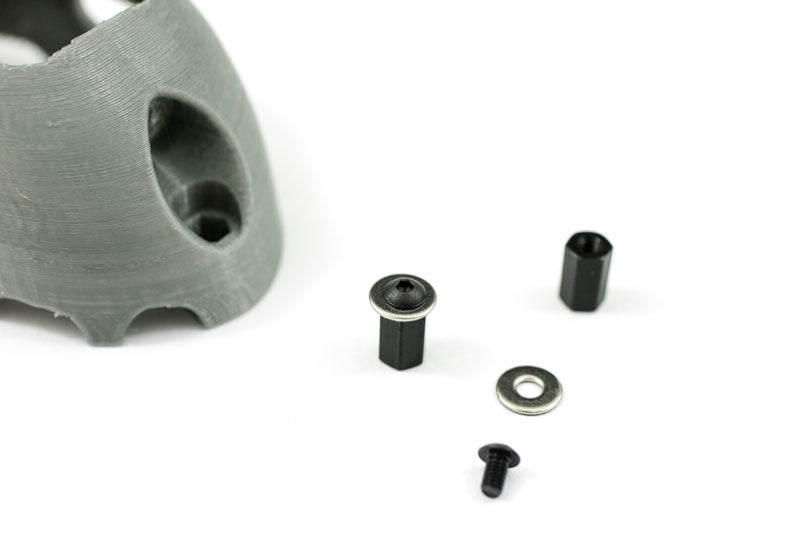
Tokio X is using a brand new simple way of mounting the canopy with only two screws. This makes working on the frame a breeze. Remove two screws on the bottom and you have access to the entire quad inside. This was also a high priority when I designed the frame. I wanted to make it super easy to do any field repairs or changes. It also makes building a breeze. Tokio X is by far the easiest quad to build. Less hardware means weight savings, no more bent standoffs and impossible for the canopy to come off.
Camera Protection
Breaking cameras suck! I’ve broken 4 cameras in my QAV-X alone. I’ve put twice as many battery packs through my three Tokio X prototypes and the cameras are fine.
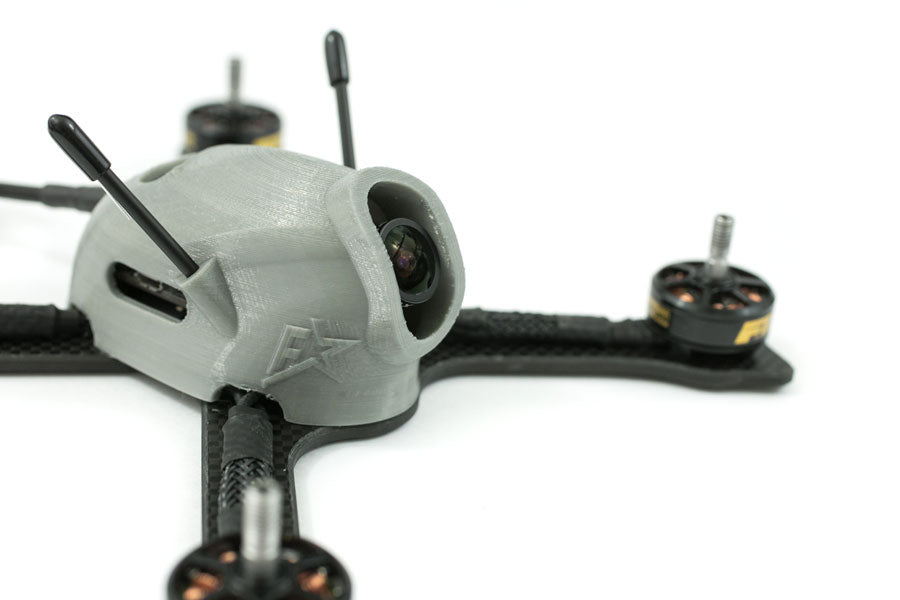
Tokio has three layers of camera protection:
- Thick protruded lip around the lens. This is designed so the lens sits inside the frame.
- Flexible canopy. Absorbs the shock of impacts.
- Bendable bracket that mounts the camera.
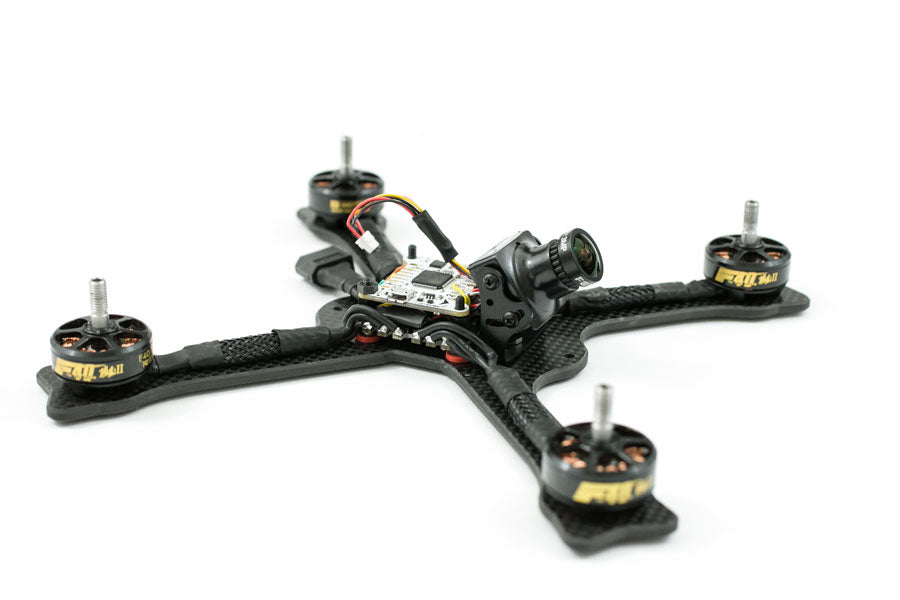
Tokio X is designed to be used with the FOXEER Arrow or RunCam Swift using the angle locking bracket. HS1177 can be used but it won’t have the angle locking feature. No more over complicated camera mounts. I didn’t want to mount the camera on the canopy because I wanted to be able to remove the canopy and have all the components on the frame. This makes building and repairs simple.
Once again, simplicity is the ultimate sophistication.
VTX and Antenna Protection
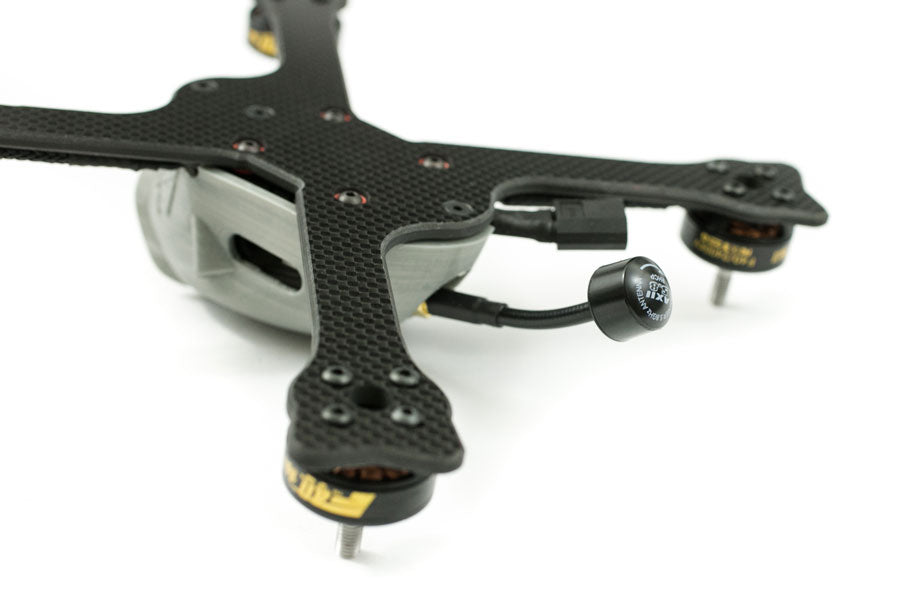
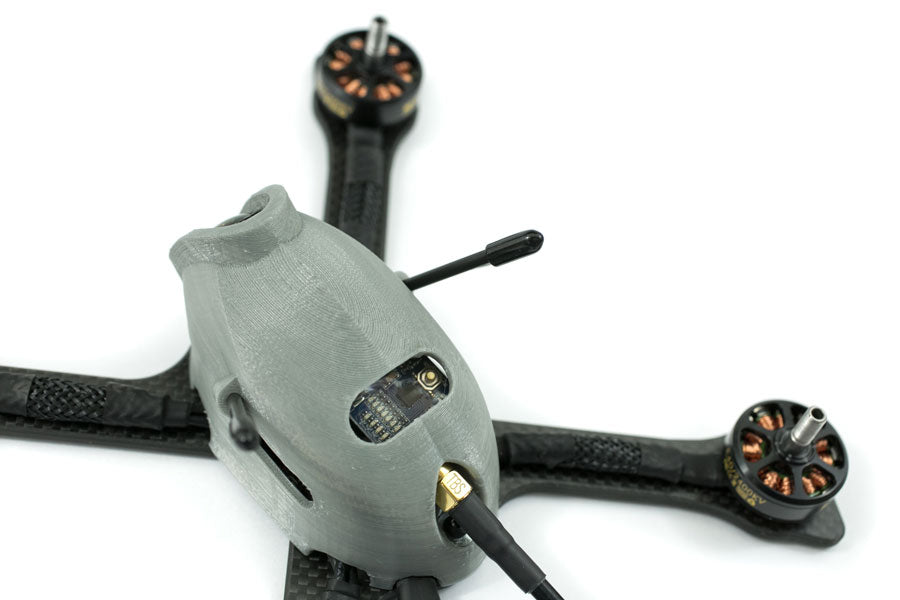
This was probably the hardest thing to design on the canopy. I tried so many different ways to mount it before I came up with this. Most quads mount the antenna pointing up. This makes it a dominate stress point when it lands upside down or in a roll. The VTX/antenna on the Tokio X is designed at a 15 degree downslope. This puts the antenna down below the props and tucks it between the two back motors. This way the antenna never touches the ground if it lands upside down.
Carbon Fiber Plate
No expense spared when it came to making the carbon fiber plate. I got prototypes from several manufacturers and compared different cuts and types of carbon fiber before settling on a manufacturer. Quality of cuts, types of carbon fiber, quality of carbon fiber, tolerances and lead times were the criteria in choosing the manufacturer.
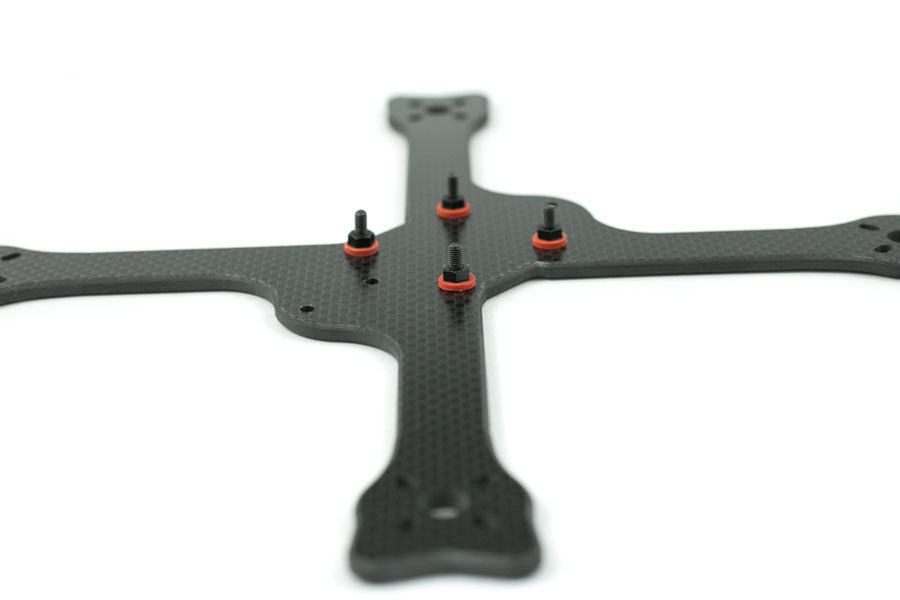
Frame Details
- Butter Mount frame
- Chamfered outer edges – eliminates sharp edges to cut velcro straps or wires. Makes the arms less prone to take a hit and fray. Looks damn sexy.
- Completely flat bottom. Countersunk holes and butter mount makes the bottom completely flat. No more protruding screw heads to tear apart batteries.
- Hypotense Cut – using 0/90 carbon fiber, the models are rotated 45 degree on the carbon fiber sheet so the carbon fibers run down the length of the arms. 0/90 Carbon fiber lays sheets of carbon fiber in a way the fibers lay in a tic tac toe pattern. If the frames aren’t rotated 45 degrees, the fibers are cut. This leaves only the resin and bits of carbon fiber down the arms. Rotating the model 45 degrees leaves the carbon fibers intact inside the resin. I tried Quasi-isotropic carbon fiber also zithromax cena. Quasi-isotropic is rotating each layer of the carbon fiber sheets 45 degree in the manufacturing process. This way the models don’t need to be rotated 45 degrees before cutting. Sounds nice but in this application where we need the strongest arms possible, 0/90 is better. Say if you have 8 layers in a carbon fiber sheet. On the 0/90 you have 8 layers of fibers going down the arm. The Quasi-isotropic only has 4 layers of fibers going down the arm.
The broken frame one of my testers had was using the quasi-isotropic. We won’t be using this type of carbon. All our 0/90 rotated frames have been going strong.
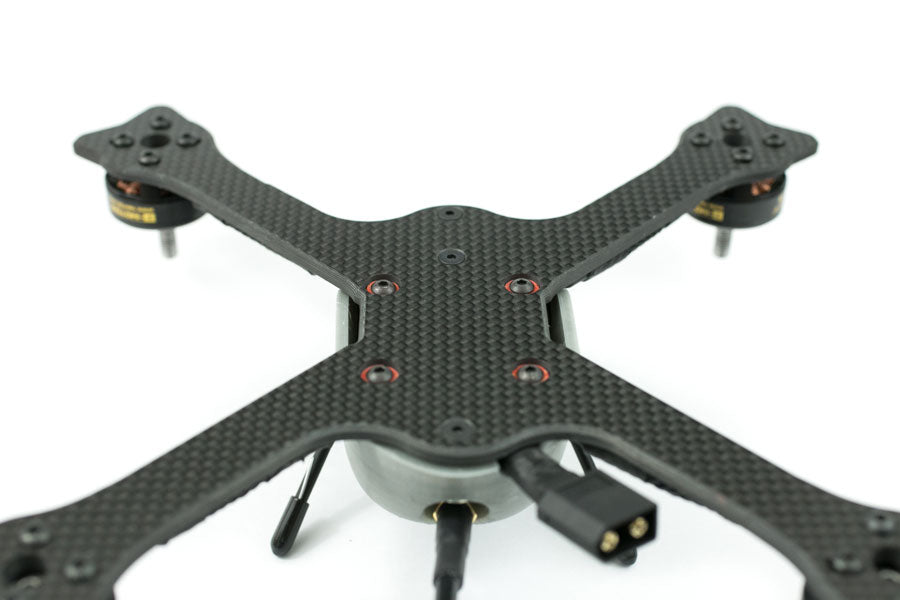
All these details make the frame much more expensive to produce. Especially the 0/90 hypotense cut. A normal cut can fit 5 frames on a sheet. Rotating the frame 45 degree can only fit 4 frames. It costs more but it’s the absolutely strongest way to make a carbon fiber frame. No expense spared.
Dream Come True
This has always been a dream of mine ever since I was little. To design, manufacture and sell products. Although I’ve been designing 3D products for the past two years, I consider Tokio X as my first real product. No joke, it’s been one of the hardest and most frustrating things I’ve ever done. It was totally worth it. Tokio X is killing it!
Thanks to everyone who contributed in designing Tokio. I compiled a list of problems from reader comments, emails, messages and talking with with other pilots. One by one they were all solved in this frame. Together, we made a bad ass frame. Look for it on many podiums this year.
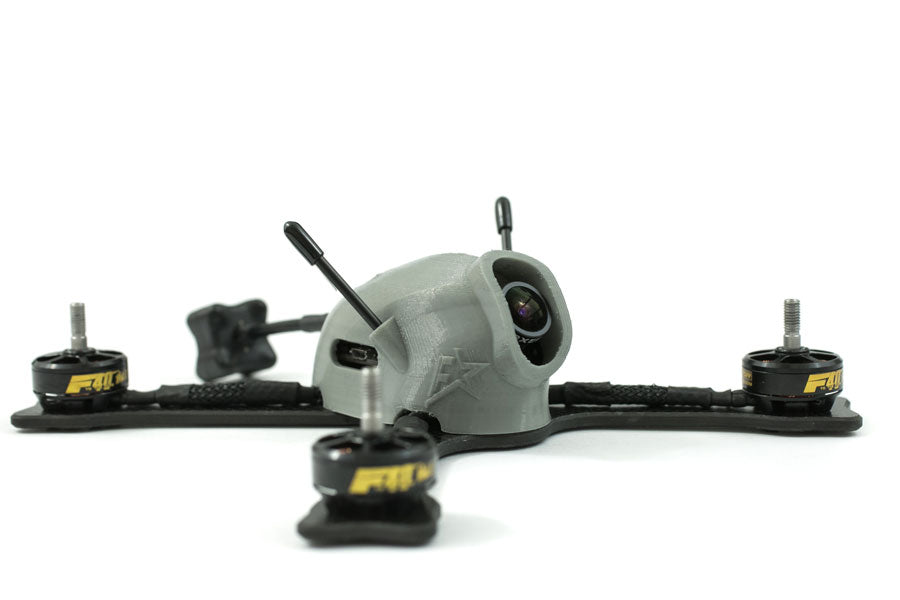
Pre-Orders
The first batch of frames have already started production. Pre orders will start Friday, March 10, 2017 with a delivery date of approximately March 24th. If you are interested in getting a frame, do not wait. The first batch is small and will probably sell out pretty quickly.
Get it HERE!
